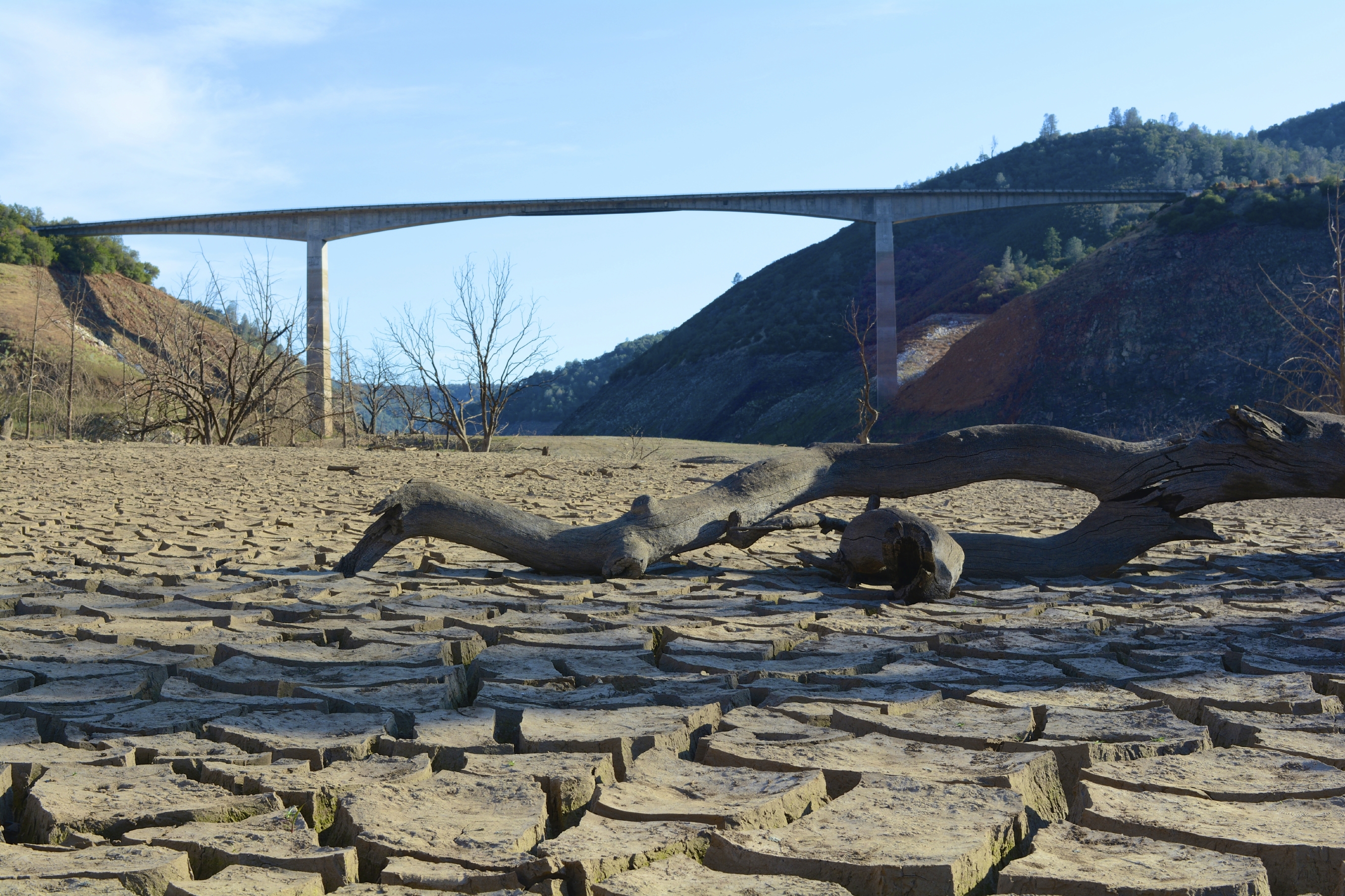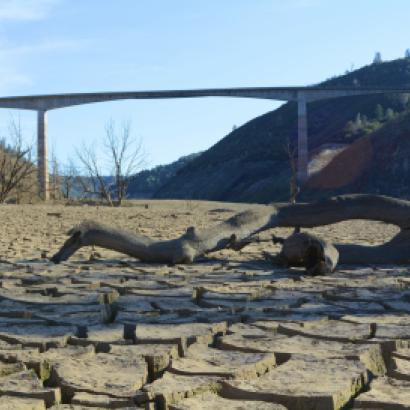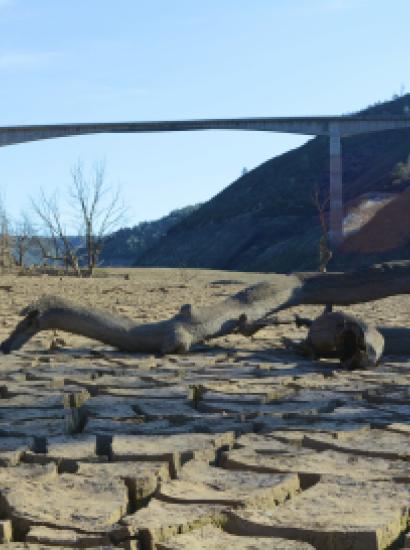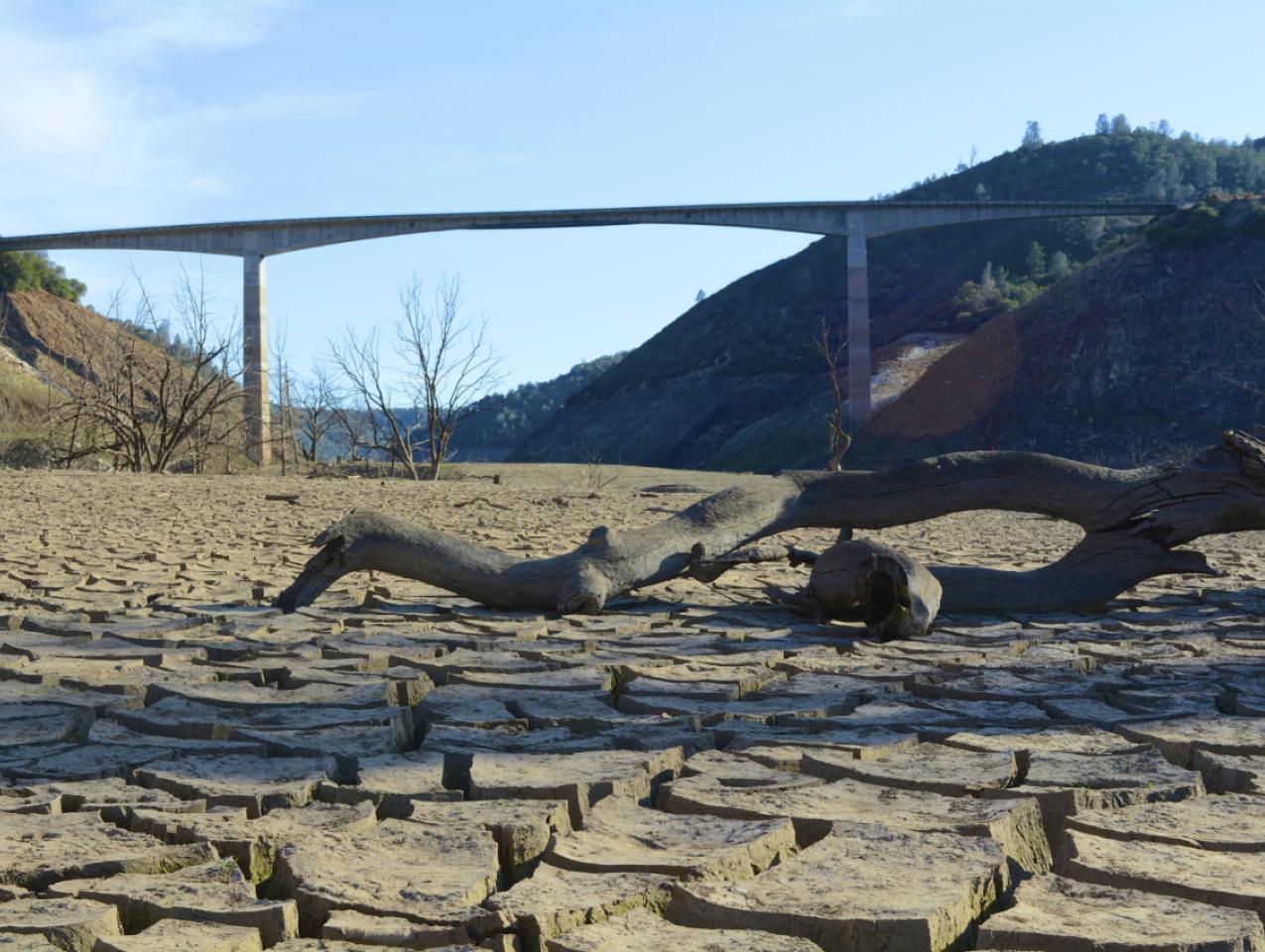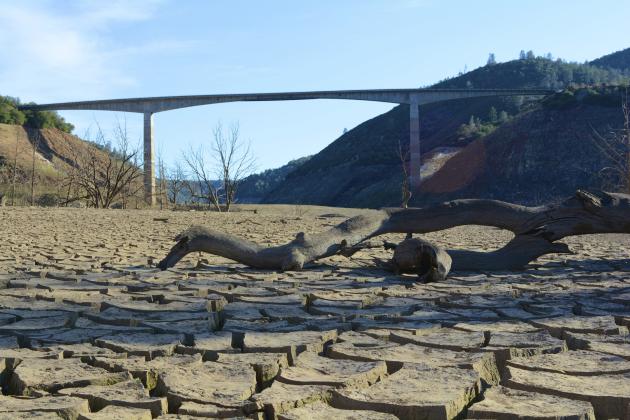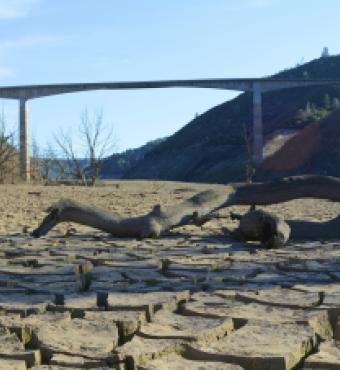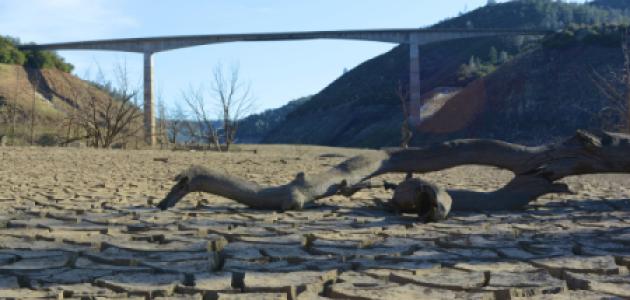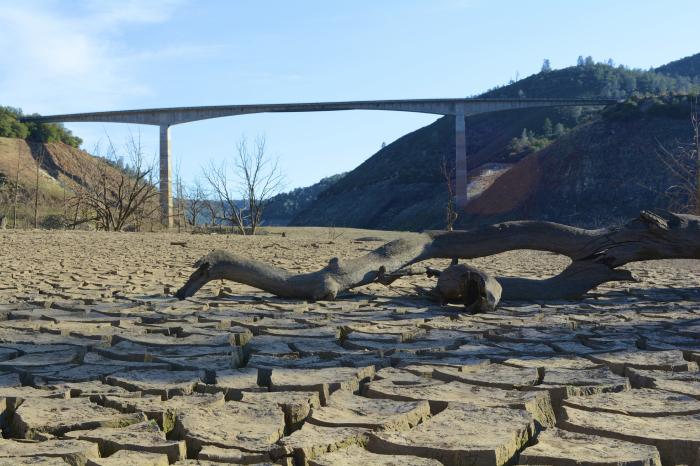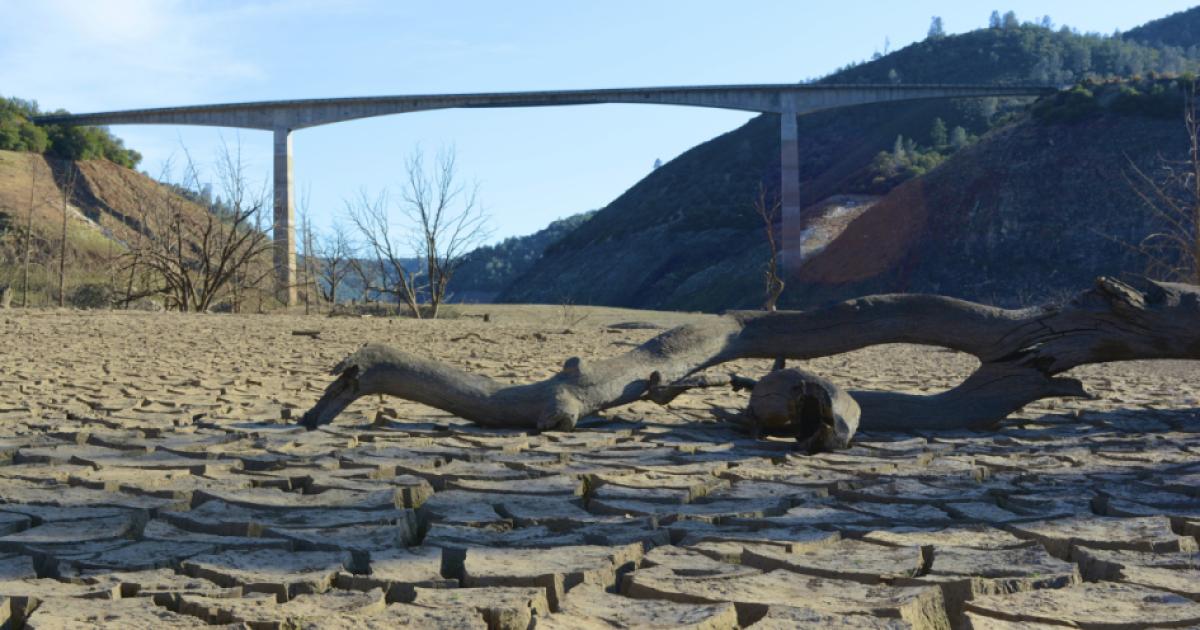- Politics, Institutions, and Public Opinion
- State & Local
- California
Russian by birth and a New Yorker by trade, the great songwriter Irving Berlin is now a Californian in spirit. For it’s his 1919 tune, “How Dry I Am,” that best sums up the Golden State’s parched status.
California, in case you haven’t seen or heard, is in the midst of a four-year drought. How bad of a dry spell, you ask? Actually, it’s an “extreme to exceptional drought” – meaning widespread water shortages in reservoirs, streams and wells, major crop and pasture losses, plus a need for water restrictions.
It’s not the first time California has faced such hardship. The Golden State endured a six-year drought beginning in 1929, a two-year drought from 1976-1977, and another six year “event” that ran through 1992 (here’s some historical background, courtesy of state’s Department of Water Resources).
But those occurred in a different California – with smaller populations and, one could argue, less political and social friction.
What the present drought does represent is one of those rare times – in a state with a diverse population and diverse interests – when misery and inconvenience transcends economics, social status, and geography.
Not to mention: a challenge for a state that’s arguably the world’s most imaginative society to envision a way out of such troubles as:
- For the first time since the latter half of the 1970s, California has ordered a cutback in farmers’ water rights.
- Cities and towns have been told to trim back their water use by more than one-third. For California’s 38 million residents, that means the dawn of a new era of having to make do with less – not an easy transition for a state that loves it emerald lawns and pristine swimming pools.
- According to University of California-Davis researchers, more than 540,000 acres of land have been fallowed. In 2015, California farmers had nearly 9 million fewer acre-feet of surface water for irrigation – about one-third of acre-feet normally used in a year.
- In California’s cities, less water means less revenue for utilities – some $600 million less by the end of 2015, which could mean higher rates in the months and years ahead.
- Conspicuous water wasters – i.e., folks hosing down driveways or using drinking water in decorative fountains – face fines of $500 a day (although, so far, there’s been a wide disparity in actual enforcement).
- The drought has also thrown California’s fauna and flora for a loop. Climate change, wildfires – even odd animal behavior – have been linked to the prolonged dry spell.
- And, yes, the drought has affected Californians’ lifestyles. Homeowners are looking at a new trend in exterior design – a less thirsty outside décor (picture cacti, rock gardens, and faux grass).
So much for the times when California could rely on the fragile balance of dry summers and wet winters. About this coming winter: California is on watch for an El Niño event later this year – warm Pacific waters that supposedly will be brings loads of rain to the Golden State.
However, such an event won’t end the drought for multiple reasons: too much water likely will get lost in runoffs and warm rains aren’t the best way to build a higher-altitude Sierra snowpack that keeps California awash for the rest of the year.
Quick fixes to ending the drought, it seems, are as sparse as rain itself. Ocean desalination, for example, has its own set of headaches (starting with energy costs). Dam construction is complicated by funding, environmental laws, and finding suitable areas to build (California’s ten largest reservoirs all were built from 1927-1979).
Now, some good news: California cities cut their water use by a combined 31% in July, exceeding Governor Jerry Brown’s statewide mandate to make do with at least 25% less (in June, the cities cut back by 27%).
The bad news: it remains to be seen if this is a sustainable trend. California apartment dwellers, for example, are notoriously loath to cut back on their water consumption (the threat of fines for water overuse seems to work better on homeowners and farmers than apartment renters, whose units are largely unmetered).
And there’s the tricky matter of California’s rich-poor divide. Some of California’s biggest water-guzzling communities also happen to be some of the state’s wealthiest – homes with eight-digit value, where the attitude among some is: “we’re not all equal when it comes to water”. Their future? Maybe one of fines and forced cutbacks – even public shaming if need be.
In this issue of Eureka, we explore the ramifications of California’s epic drought – residents’ attitudes toward a new age of recycling and restrictions; innovation on the part of water providers; other policies the state should consider moving forward, plus the impact the historic dry spell’s had on California’s farming way of life.
That includes:
- A new Golden State Poll examining the public’s willingness to go along with new approaches to water policy; Hoover research fellow Carson Bruno has an analysis on the poll’s results;
- Hoover senior fellow Victor Davis Hanson details the drought’s impact on the Golden State’s agriculture sector and the Central Valley’s traditions – for Hanson, a very personal concern, as he’s a fifth-generation California farmer;
- Newsha Ajami, director of urban water policy for Stanford’s Woods Institute on the Environment, highlights some smart approaches for California moving forward;
- And finally, Cathy Green, president of the Board of Directors for the Orange County Water Board, showcases how innovations are already underway in Southern California.
And before all of that, we have this podcast offering insights into our poll’s findings and the social, political, and policy facets of the drought .
We hope you enjoy this latest installment of Eureka – and that it gets you thinking about where California stands and if we’re moving in the right direction.







